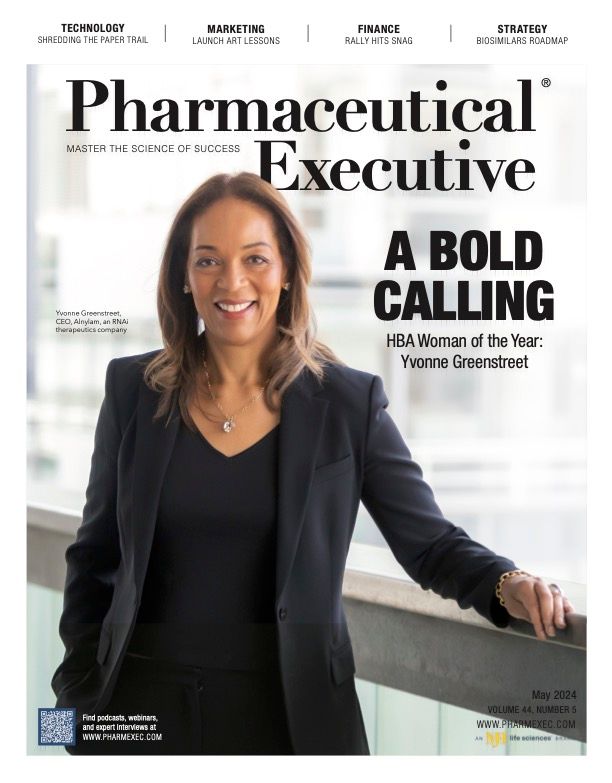- Sustainability
- DE&I
- Pandemic
- Finance
- Legal
- Technology
- Regulatory
- Global
- Pricing
- Strategy
- R&D/Clinical Trials
- Opinion
- Executive Roundtable
- Sales & Marketing
- Executive Profiles
- Leadership
- Market Access
- Patient Engagement
- Supply Chain
- Industry Trends
Biotech’s Road to Recovery Takes a Wobbly Turn
Now-unclear timing on rate cuts puts onus back on fundamentals.

As of the writing of this column (May 1), the XBI stood at $88.30, well off of its recent recovery high of $102+ on Feb. 27, but still more significantly above the Oct. 27, 2023, low of $64. For context, the index hit an all-time high of $140 in October of 2020 (the COVID-19 “sugar high”), which was followed by a painful three-year decline of 54% from peak to trough, a bloody run for biotech specialists to be sure. The least fortunate early-stage companies who went public with limited capital and no proof-of-concept data fared far worse; some falling 90+%, others are no longer in business, and those who have survived have done so by making difficult decisions, including reprioritizing programs, restructuring to extend cash runways, or pursuing reverse mergers or shut-downs/liquidations.
The rally off of the bottom for the XBI began last October—and from then until February of this year the index surged 59%, at which point the XBI was actually up year-to-date by 13%, versus the S&P 500, which was up 6.9%. Now, the XBI is down about 2% year-to-date, while the S&P 500 is up 5.8%.
SO, WHAT HAS HAPPENED?
Here is a great recent explanation by the brilliant Mike Darda, chief economist and market strategist at Roth - MKM: “Markets have continued to back out Fed rate-cut expectations on the heels of a stronger-than-expected March retail sales report and recent stabilization in the long-beleaguered manufacturing sector. Data-dependent FOMC-ers (Federal Open Market Committee) are, hence, signaling that there will be no rush to begin lowering policy rates. Against this foliage, the 10-year Treasury yield at 4.66% is making a run back toward the 2023 highs, pushing the equity risk premium—the gap between the earnings yield on equities and the risk-free rate on Treasuries—to new cycle lows.” (In an investors note in the prior week, Darda explained that there are several hurdles that the Fed must face before it can justify easing rate cuts).
Darda goes on to detail that “Powell & Co. have stated that they will need additional data to gain ‘confidence’ that inflation remains on a ‘bumpy’ but, nonetheless, steady path back to 2%. The FOMC did not get that confidence out of the March CPI release, which came in ‘hot’ for the third consecutive month. Even more problematic for the FOMC is the acceleration in non-energy services inflation, excluding housing, a metric that has accelerated to an 8% annualized run rate over the past three months, the highest since mid-2022 when the Fed began to move rates up in 75 bps (basic points) increments. Although we continue to see downside risks to growth—and eventually inflation—the optics of $300K payroll prints, 0.4% m/m core inflation readings, easy so-called financial conditions, and a central bank planning to cut rates/ease multiple times with an election approaching are nothing short of a disaster for the Fed, in our view.”
In my last column, I referenced that the index has traded inversely with interest rates since 2021 (tightly correlated with the economy and inflation, where conflicting reads continue). But I went on to say, that investors have now clearly decided that it is merely a question of when—not if—we will see rates decline, and with that line of sight, are accordingly focusing less on macro factors to assign valuation metrics and leaning more decidedly on fundamentals.
Well, pause there! That is no longer the view on rates; the line of sight is at best blurry and clearly protracted, so we are back trading in a seesaw correlation with rates; we can’t go up until they go down. That said, the fundamentals are decidedly positive on a number of fronts:
- Inevitable rate cuts.
- Positive clinical data has provided a catalyst for fund raising and capital infusions, which has lifted the financing overhang and driven positive stock price performance.
- Record financing activity in 1Q: $15.4 billion raised, compared to $14.8 billion in 2021, $1.3 billion in 2022, and $4.4 billion in 2023.
- Record levels of $1 billion+ M&A transactions so far this year, which points to a record year and has put tens of billions of dollars into the sector fund’s pockets to be reinvested.
Rate declines are clearly delayed—but the positive fundamental drivers of performance remain.
Barbara Ryan is Founder, Barbara Ryan Advisors, and a member of Pharm Exec's Editorial Advisory Board

